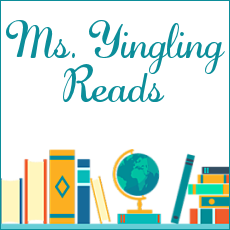March 3rd 2020 by Scholastic Press
E ARC provided by Edelweiss Plus
Bean lives in a small Wast Coast town that has a lot of wealthy tourists. Her mother works at a convenience store, the father is long gone, and her brother Willis, who is very bright, is arrested three times for various offenses. His last offense is driving a stolen car while drunk, and this lands him in jail. After her mother can't put up the $1,000 bail, Bean is determined to find a way to make money, especially since her mother refuses to let her visit her brother, saying that "it is what it is" in a very resigned, depressed fashioin. She goes to the houses of the wealthy, offering to paint and do odd jobs, but has no luck. She does meet Phoebe, who is several years younger, and is staying in the house with her nanny, Edwin. The two have a mastiff named Honey who is supposed to be a guard dog while the parents are on a protracted vacation. Bean starts to hang out with Phoebe during the summer, and hatches a plan to convince Phoebe to sell the dog and get a smaller, cuter dog instead. At first, Phoebe thinks this is a great idea, but is a little more reluctant when Honey starts to foster three small kittens. Bean goes as far as contacting someone and arranging to meet, only to discover that the man to whom she has agreed to sell the dog, Sam, runs an illegal fight ring. In the meantime, the local sheriff works very hard to get Willis a placement in a special school for bright students with records, but Bean only wants her brother to come back home and doesn't think he should have to do community service before being allowed back into the local high school. She and Phoebe plan to meet Sam but turn him in to the police. Will they be able to bring the man to justice and to keep Honey?
Strengths: There used to be more realistic fiction where children took matters (like bringing down dog thieves) into their own hands, and this certainly is an empowering story in that regard. I also liked the struggling family, and the brother who is in trouble. I have students in similar situations, and there are very few books depicting older siblings who are in trouble with the law. Phoebe's absentee parents provide another sort of difficulty, but she at least has Edwin. There is a nice interaction with an older neighbor whom Bean and Phoebe try to help.
Weaknesses: Bean makes so many poor choices that are quite dangerous. They affect not only her, but Phoebe and Honey as well. Her attitude about the brother's behavior is worrisome; it would have been nice if the mother and Bean had gotten some counseling or help; I'm sure the sheriff would have helped them with this, since she went out of her way to get a good situation for Willis.
What I really think: Debating. I am uncomfortable with the danger into which Bean puts herself and her friend.

































































